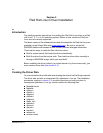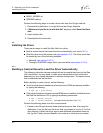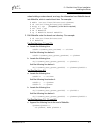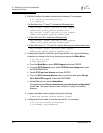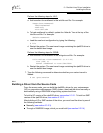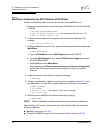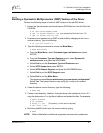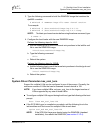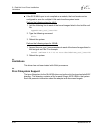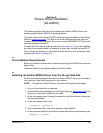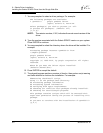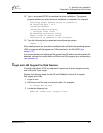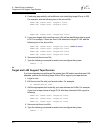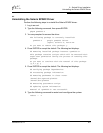
5 – Red Hat Linux Driver Installation
System Driver Parameter max_scsi_luns
IS0053301-00 D 5-9
Q
3. Type the following command to build the RAMDISK image that contains the
qla4000.o module:
# mkinitrd -f <RAMDISK image file name> <kernel version>
For example:
# mkinitrd -f /boot/newinitrd-image.img 2.4.7-10
# mkinitrd -f /boot/newinitrd-image.img 2.4.7-10smp
NOTE: To obtain your kernel version before using the above command, type:
# uname -r
4. Configure the boot loader with the new RAMDISK image.
Perform the following steps for LILO:
a. Add the following line to one of the kernel entry sections in the /etc/lilo.conf
file to use the RAMDISK image:
initrd=/boot/newinitrd-image.img
b. Type the following command:
#lilo
c. Reboot the system.
Perform the following steps for GRUB:
a. Add the following line to one of the kernel entry sections in the /etc/grub.conf
file to use the RAMDISK image:
initrd /newinitrd-image.img
b. Reboot the system.
5.4
System Driver Parameter max_scsi_luns
Support for multiple LUNs can be configured in one of three ways. Currently, the
maximum number of LUNs that can be scanned for each device is 128.
NOTE: If you have multiple HBAs, set max_scsi_luns to the largest number of
LUNs supported by any one of these HBAs.
■ To configure multiple LUN support during boot time, type the following at the boot
prompt:
boot: linux max_scsi_luns-128
■ If the SCSI Mid-Layer is compiled as a module, add the following line to the
/etc/modules.conf file to scan for multiple LUNs at each boot:
option scsi_mod max_scsi_luns=128
NOTE: If the SCSI Mid-Layer was loaded using the RAMDISK (standard
installation), the rebuild the RAMDISK (see section 5.3.2.4).



